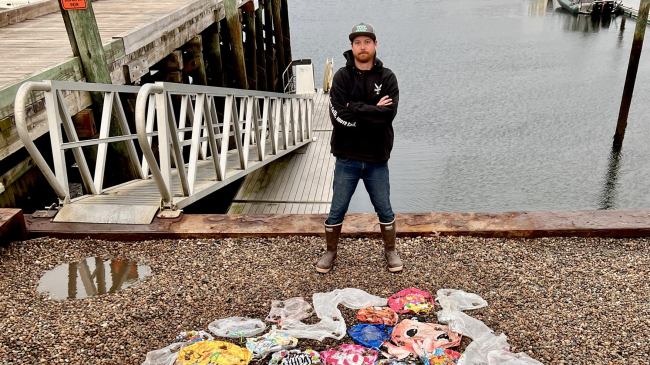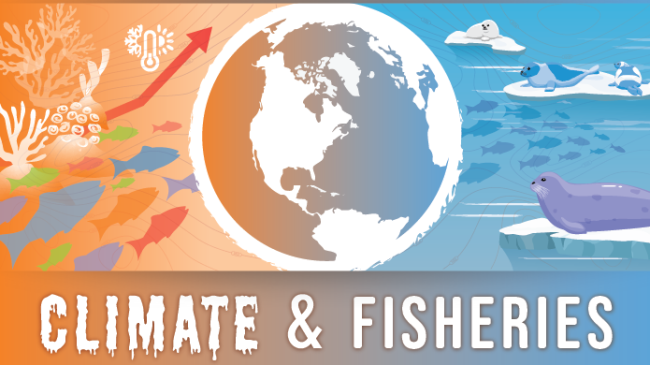By Jennie Lyons & Kate Brogan
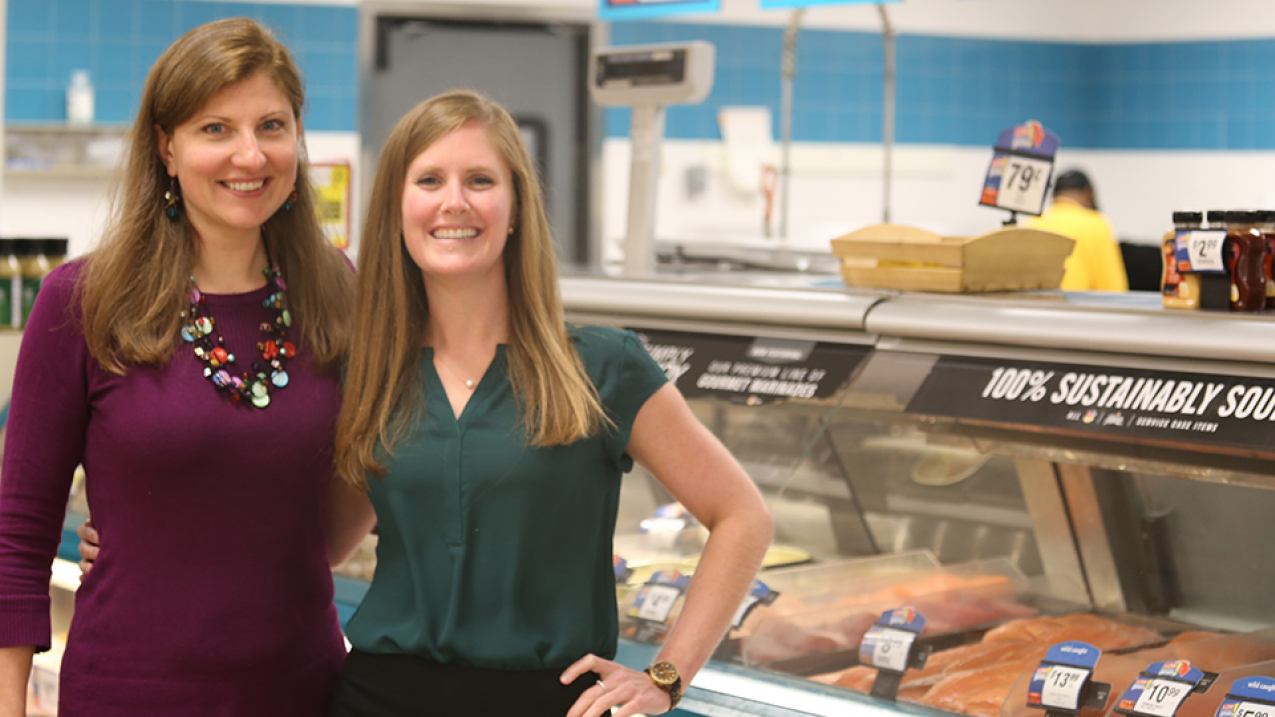
NOAA Fisheries public affairs officers Jennie Lyons and Kate Brogan. (Image credit: NOAA)
Hi, we’re Jennie and Kate and we work at NOAA Fisheries, with folks who spend all day thinking, talking, and studying fish. Coming to NOAA was eye-opening for us both – in different ways. Before NOAA, neither of us paid much attention to the seafood on our plates, but learning about fish with our new colleagues inspired both of us to dive deeper.
Jennie:
I remember thinking pretty quickly into the job, I’m feeding my family all wrong! When my kids were born, I pretty much bubble-wrapped the house to keep my tiny charges safe. I avoided seafood because I didn’t know what was safe or how much to eat, and I had some misconceptions that needed clearing up. For example, I was surprised to learn that antibiotics use has all but disappeared in farmed fish in the U.S. Not to mention that the average American isn’t eating enough seafood.
Kate:
The health benefits are huge, and not something I really considered either until I started working here. As I get more into fitness and move away from my college diet of pizza and french fries, omega-3 fatty acids and lean protein make fish and shellfish some of my favorite new foods to try – when I’m in restaurants with friends or trying fun recipes at home!
Jennie:
Yes! I was actually depriving my children of one of the most beneficial things they could put in their little bodies to develop growing brains and strong hearts. And thinking about their future too – fish is a sustainable protein option.
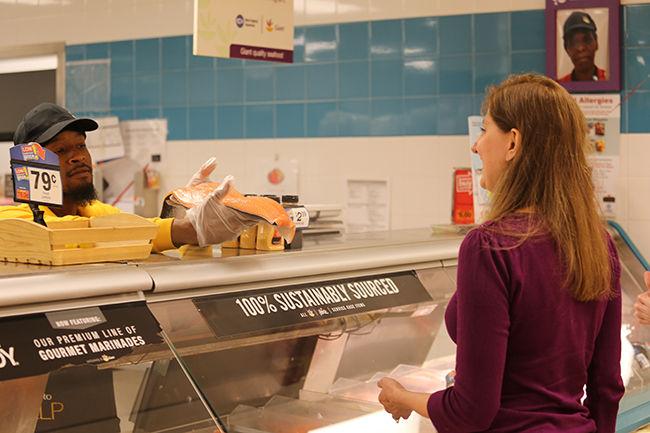
Kate:
I am also interested in making seafood choices that are good for the planet AND keeping an eye on my wallet. But the word sustainability is found on so many labels and menus, it left me scratching my head. This video from NOAA’s Fishwatch program helped me figure out what really matters when it comes to making informed seafood choices. One of the key things I learned was that U.S. caught seafood is among the most sustainable in the world, and our fishing industry follows rules that help ensure future fish populations and protect underwater areas where fish live.
Jennie:
But it doesn’t matter how sustainable it is if your family won’t eat it. I have three picky eaters (yes, husbands count). So once I decided to change our diets, I needed tricks up my sleeve. Salmon is the crowd pleaser in my house. It’s fast, easy and mild. My tip: Use real maple syrup as a glaze or pair with fruit compote to satisfy a sweet tooth in a healthy way.
Kate:
Great idea! While you are cooking up family-friendly recipes, I am always looking for smaller dishes for one or two that I can make on a budget. One recipe that’s become a favorite is this blackened bluefish (trying saying that five times fast!) with tropical salsa. The recipe outlines how much fish is needed per person, so you can make a meal for one or for a larger group of friends. And the salsa is great any time of the year!
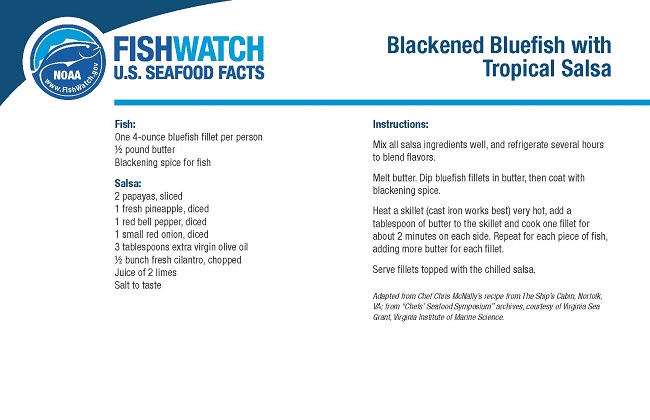
Jennie & Kate are public affairs officers for NOAA Fisheries.


